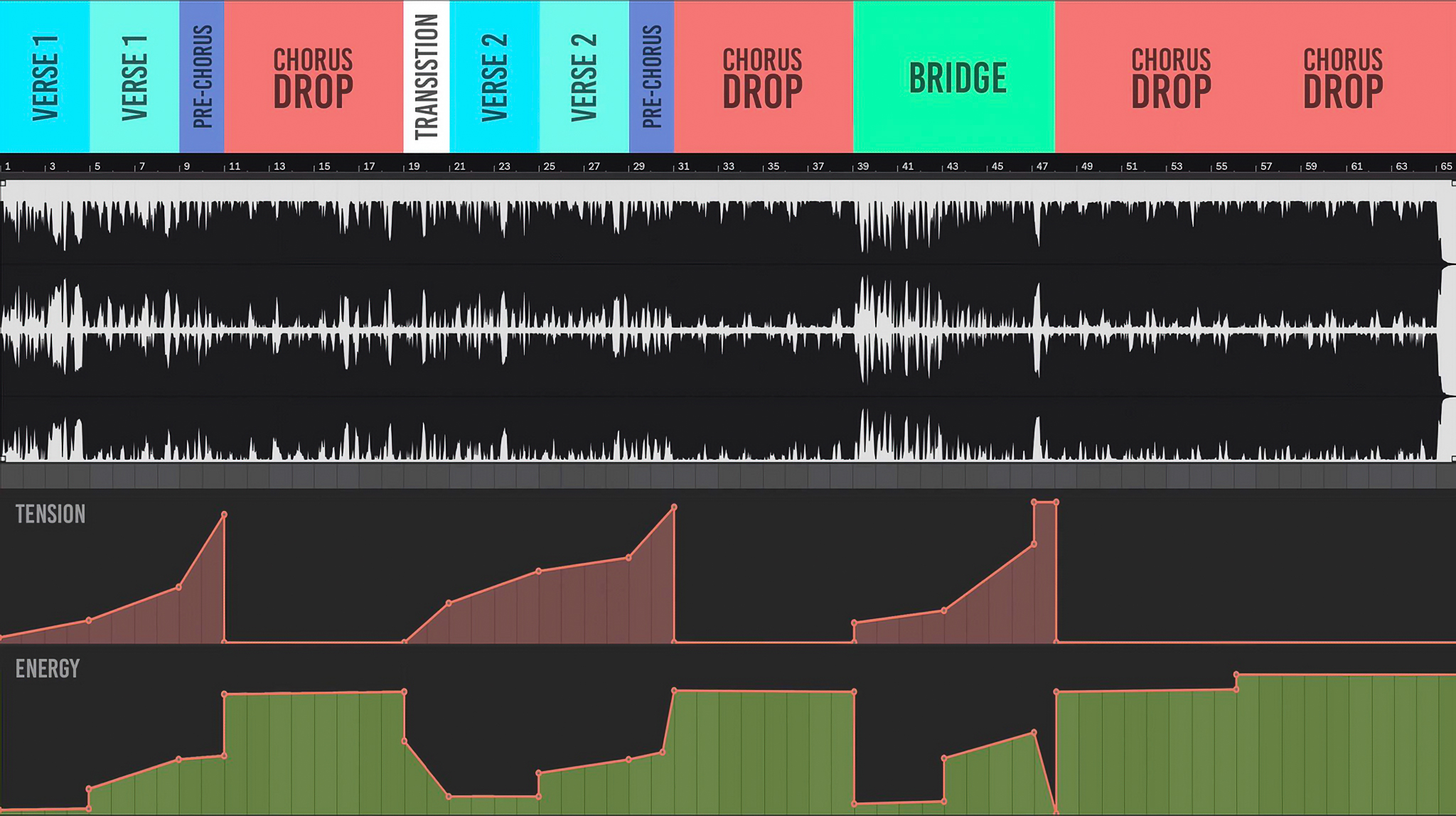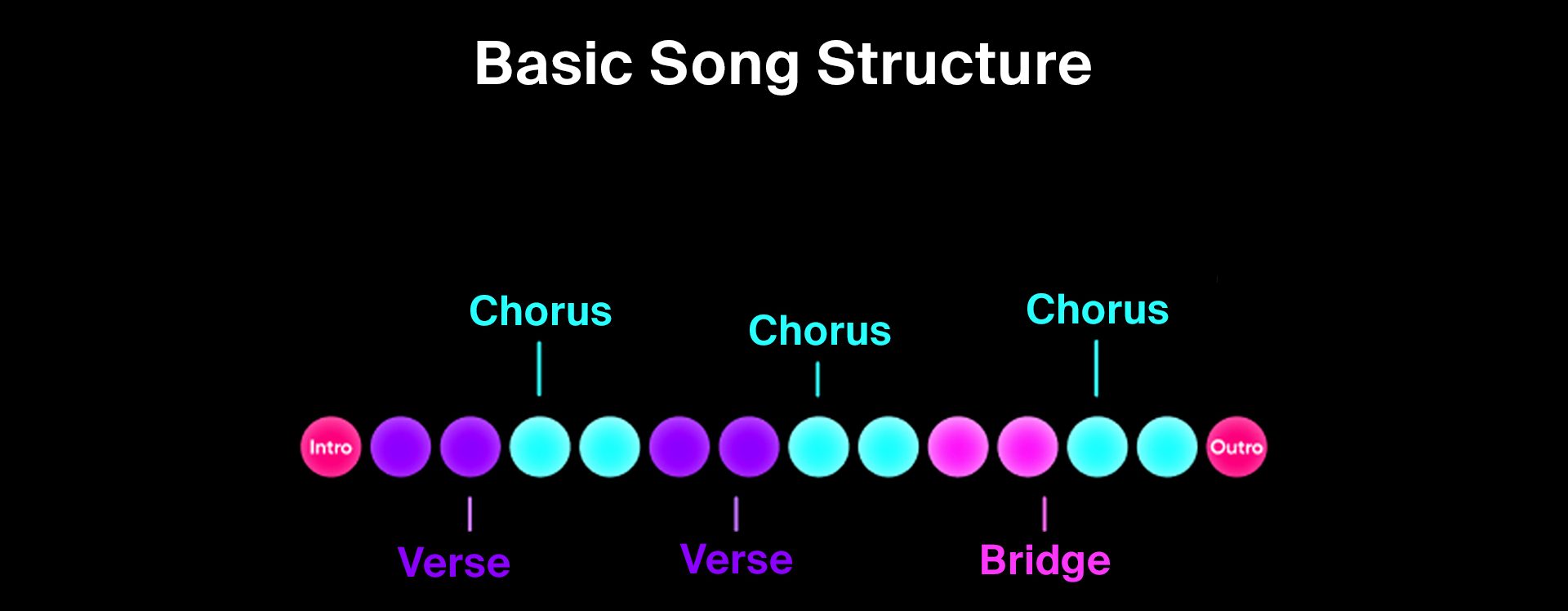Whether you’re writing a pop hit, producing a house track, or composing an acoustic ballad, song structure plays a crucial role in how your music connects with listeners. A clear structure gives your track direction, helps build emotional impact, and keeps your audience engaged from the first note to the final fade.
Knowing how to arrange a song from intro to outro allows you to shape the energy, control the flow, and make creative decisions about when to repeat ideas and when to introduce something new. For both producers and songwriters, mastering structure is a fundamental skill that helps turn strong ideas into complete, professional tracks.
In this guide, we will break down the essential parts of a song, explore common structures used across genres, and share practical tips to help you improve your songwriting and arrangement skills.
Why Song Structure Matters
Song structure is one of the most important tools for creating music that feels intentional, engaging, and emotionally satisfying. It shapes how a listener experiences your track, guiding them through changes in energy, mood, and focus.
Keeps the Listener Engaged
A well-structured song helps hold attention by building anticipation and offering resolution at the right moments. Without structure, even great ideas can feel repetitive or unfocused. With it, you can control tension and release in ways that make your music more impactful.
Supports Creative Expression
Structure is not about following rules. It is about choosing the right form to support your ideas. A verse might tell a story, while the chorus delivers the emotional core. A bridge can offer contrast or a new perspective. Understanding structure gives you more control over how your music communicates.
Helps You Finish Songs
Many producers and writers struggle to finish tracks. Structure gives you a roadmap to work with. Knowing where each part belongs can help you move forward when you are stuck, and it provides a framework for developing your ideas into a complete song.
Makes Collaboration Easier
Whether you are working with vocalists, co-writers, or other producers, a shared understanding of song structure makes the process smoother. It allows you to communicate clearly about what needs to happen in each section and how the track should progress.
Common Elements of Song Structure
Most songs consist of a combination of repeating and contrasting sections. Understanding what each part does will help you build arrangements that flow naturally and hold your listener’s attention.
Intro
The intro sets the tone and introduces key elements such as tempo, mood, or instrumentation. It is often shorter than other sections and can be as simple as a few bars of drums or a melodic hook. The goal is to pull the listener in without revealing everything at once.
Verse
Verses carry the narrative or main lyrical content of the song. They usually change slightly with each repetition, adding new lyrics or melodic variations. In production, the verse often features a more stripped-back arrangement compared to the chorus.
Pre-Chorus (optional)
Not all songs have one, but when used, the pre-chorus builds anticipation for the chorus. It acts as a bridge between the verse and chorus and often includes a subtle rise in energy or tension.
Chorus
The chorus is typically the most memorable and repeated part of the song. It delivers the central message or emotional hook and usually features a fuller arrangement. This is where your production and songwriting should truly shine.
Bridge
The bridge provides contrast, offering a break from the familiar verse and chorus cycle. It might introduce a new chord progression, melody, or mood before leading back into the final chorus or outro. Its job is to keep the song feeling dynamic and fresh.
Breakdown or Drop
More common in electronic and dance genres, the breakdown removes energy to create space and tension, while the drop delivers a high-impact payoff. These sections help control energy flow and give DJs or live performers useful points for mixing.
Outro
The outro closes the song, either by gradually fading out or resolving musically. It gives listeners a sense of completion and can mirror the intro or introduce a new motif to finish the track.
Popular Song Structures and Formulas
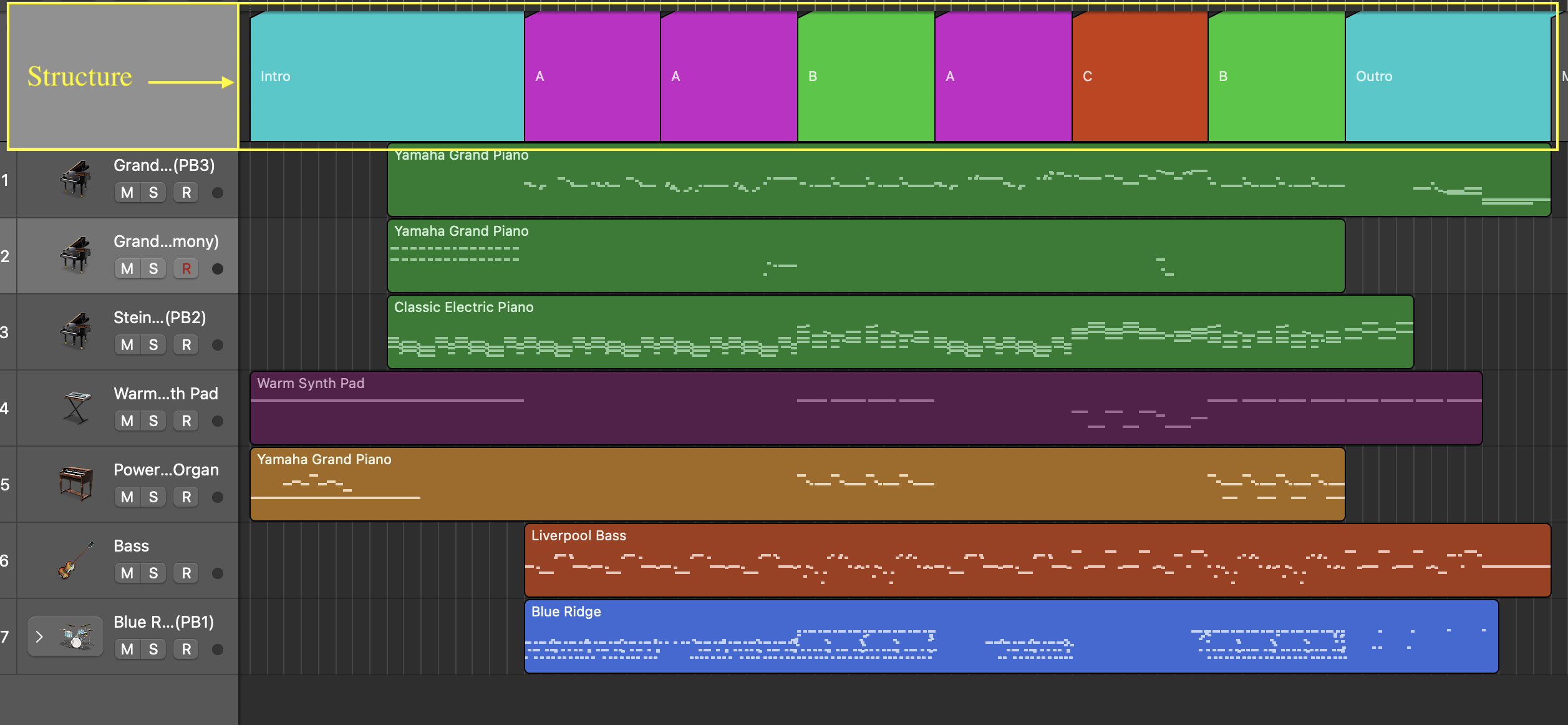
While there is no single way to structure a song, many popular formats have stood the test of time because they help create familiarity and emotional impact. Understanding these common forms gives you a strong starting point, whether you follow them exactly or adapt them for your own style.
Verse–Chorus–Verse–Chorus–Bridge–Chorus (ABABCB)
This is one of the most widely used song structures in modern music. The repetition of the verse and chorus creates a strong sense of familiarity, while the bridge adds variety before the final chorus.
Example structure:
- Intro
- Verse 1
- Chorus
- Verse 2
- Chorus
- Bridge
- Chorus
- Outro
This format works well across genres, including pop, rock, indie, and R&B.
AABA (Classic Form)
Used in many jazz standards and classic pop songs, this structure features two repeated sections (A), a contrasting section (B), then a return to the original theme.
Example structure:
- Verse (A)
- Verse (A)
- Bridge (B)
- Verse (A)
It is a simpler format that focuses more on strong melodies and lyrical development.
Loop-Based Structures (Electronic and Hip-Hop)
In genres such as techno, house, trap, or lo-fi hip-hop, songs often revolve around loops or evolving sections rather than traditional verses and choruses. The structure might focus more on build-ups, drops, and breakdowns.
Example structure:
- Intro
- Drop
- Breakdown
- Build
- Drop
- Outro
These tracks rely on subtle changes in arrangement, automation, and sound layering to maintain listener interest.
Free-Form or Experimental Structures
Some artists intentionally avoid standard forms, especially in ambient, experimental, or cinematic music. Instead of repeating sections, these songs may follow a linear progression from beginning to end.
While harder to write, free-form structures offer maximum creative freedom and are often used to create mood-driven or story-based compositions.
How to Structure a Song for Impact
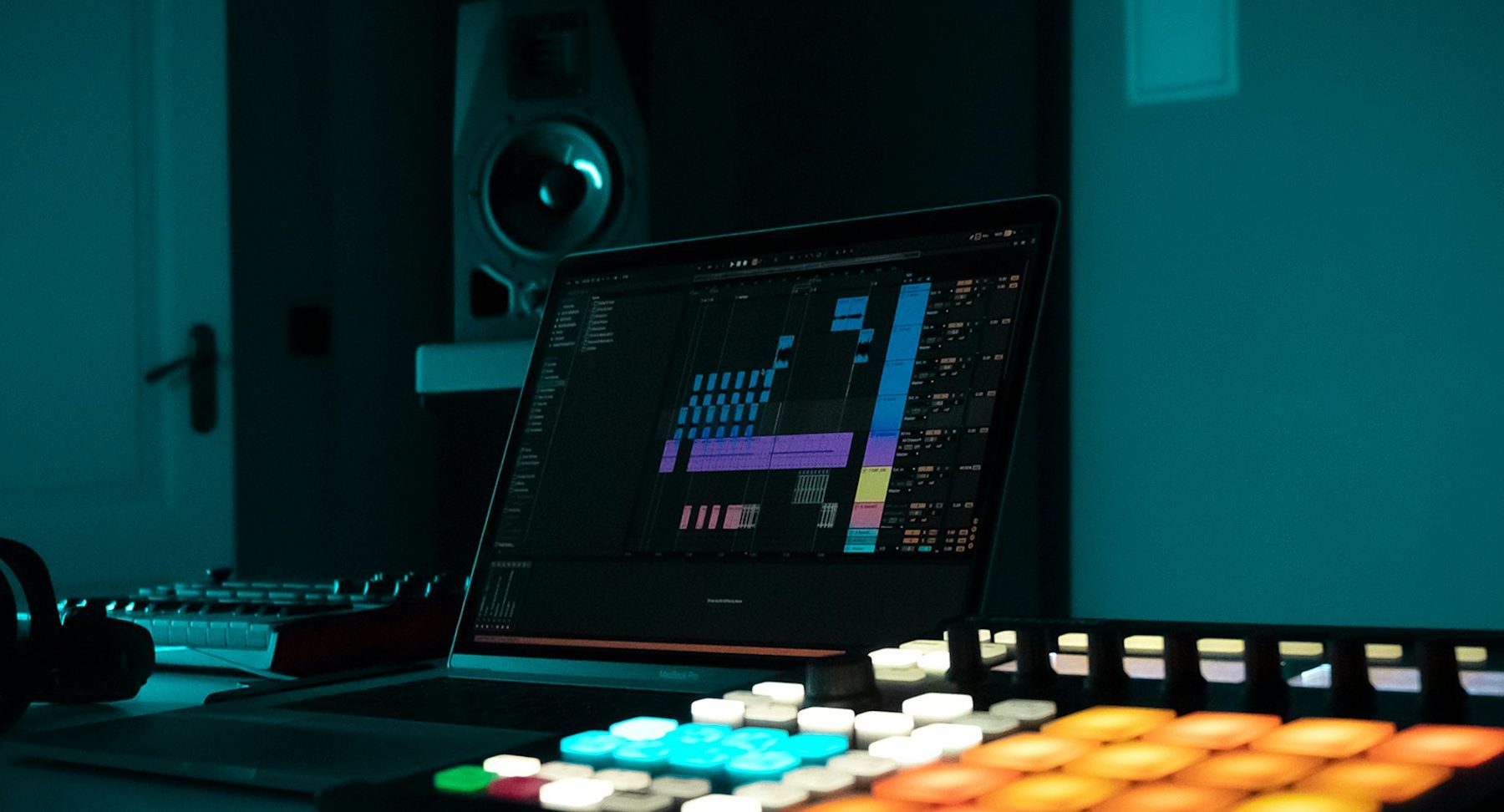
Good song structure is not just about following a formula. It is about guiding the listener through an emotional and musical journey. Whether your goal is to create energy on the dancefloor or tell a compelling story, how you arrange your sections will shape the experience of your track.
Build Energy and Momentum
Use structure to gradually increase intensity. Start with a stripped-back intro, add layers in the verse, and release full energy in the chorus. You can create variation by changing dynamics, adding new instruments, or shifting the rhythm between sections.
Know When to Repeat and When to Add Contrast
Repetition helps make your song memorable, but too much can become predictable. Repeating a chorus creates familiarity, but adding contrast through a bridge or drop keeps things interesting. Think about where your listener might expect change and give them something fresh.
Use Transitions to Tie Sections Together
Smooth transitions between sections help your song flow naturally. You can use techniques like risers, drum fills, reverse effects, or automation to lead from one part to the next. This keeps the momentum going and avoids awkward changes in energy.
Match Structure to Your Message
Let your story or emotion guide your arrangement. A sad ballad may benefit from a slow build and a reflective bridge. A high-energy club track might focus on tension and release through build-ups and drops. The structure should enhance the feeling you want to communicate.
Edit Ruthlessly
Once your song is structured, listen critically. Ask yourself whether each section serves a purpose. If something feels too long or repetitive, cut or revise it. A clear and focused structure can turn a good idea into a strong, finished track.
Adapting Structure by Genre
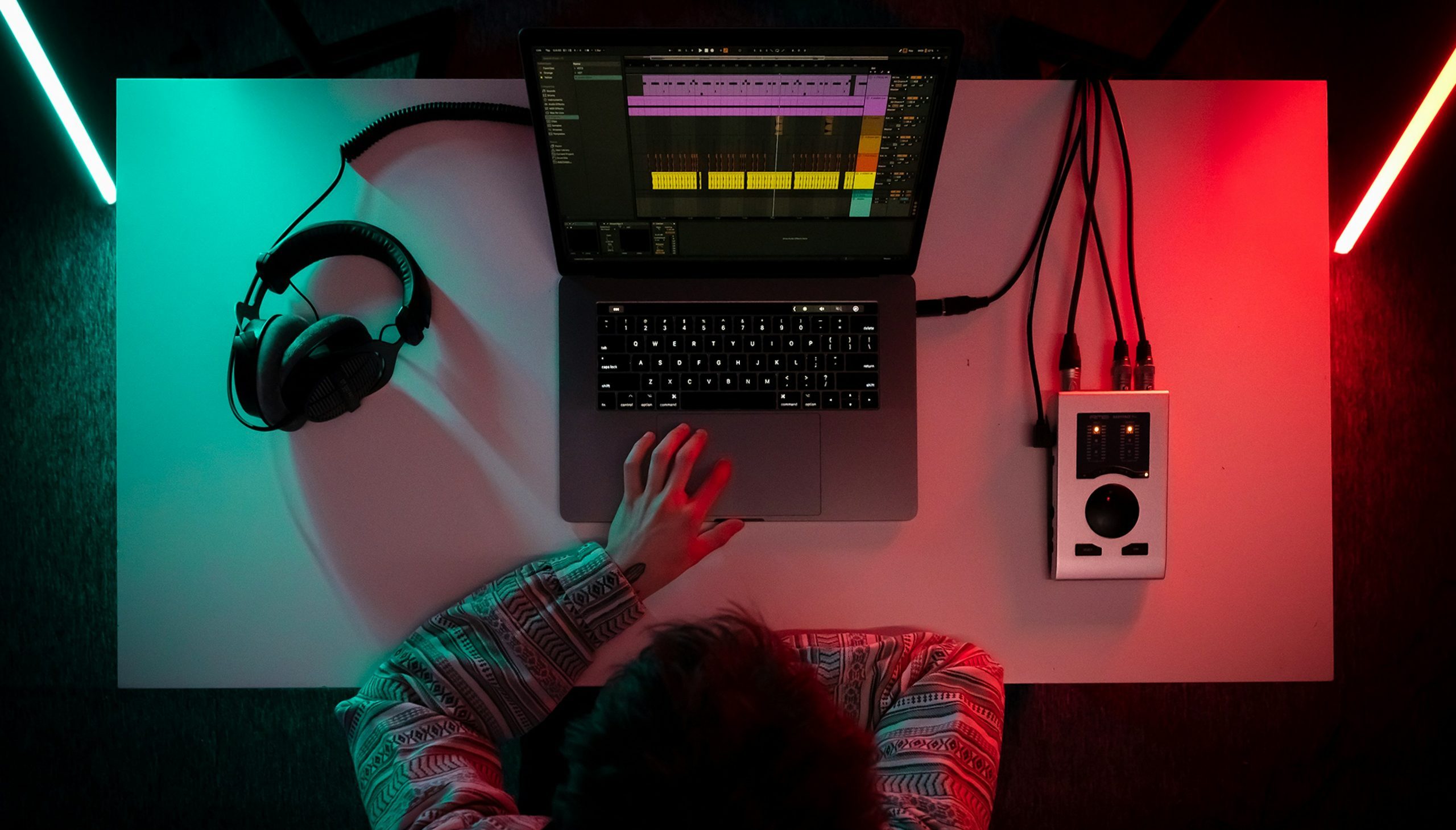
Different genres tend to follow different structural patterns based on listener expectations, performance settings, and musical conventions. Knowing how structure works within a genre can help you meet those expectations while still adding your own creative touch.
Pop and R&B
Pop music often uses a clear verse–chorus–bridge structure. Hooks are important, and choruses are usually repeated to drive memorability. Pre-choruses and bridges are commonly used to build tension and variety. In R&B, vocal performance and emotion may lead to slightly looser or more expressive forms.
Common structure:
- Intro
- Verse
- Pre-chorus
- Chorus
- Verse
- Pre-chorus
- Chorus
- Bridge
- Final chorus
- Outro
Electronic and Dance
Electronic genres like house, techno, and trance tend to rely more on evolving loops and energy changes than on lyrical sections. Builds, drops, and breakdowns are key structural points. Tracks are often arranged with DJs in mind, allowing space for mixing and beat-matching.
Common structure:
- Intro (beat or atmosphere)
- Build
- Drop
- Breakdown
- Build
- Drop
- Outro
Hip-Hop and Trap
In hip-hop, structure varies widely. Some tracks follow verse–chorus formats, while others lean on repeated hooks or beat sections. Trap music often uses short intros, heavy drops, and alternating verses with high-impact choruses or refrains.
Common structure:
- Intro
- Hook
- Verse
- Hook
- Verse
- Hook
- Outro
Indie and Alternative
Indie artists may use standard formats or experiment with form. It is common to see more variation between verse and chorus sections and less rigid adherence to commercial structures. Dynamics and lyrics often drive the arrangement.
Cinematic, Ambient, or Experimental
In instrumental or mood-driven music, structure may not follow any predictable form. Instead, the music progresses linearly, with each section unfolding naturally. These tracks often avoid repeated sections in favour of subtle development.
Tools for Arranging and Visualising Structure
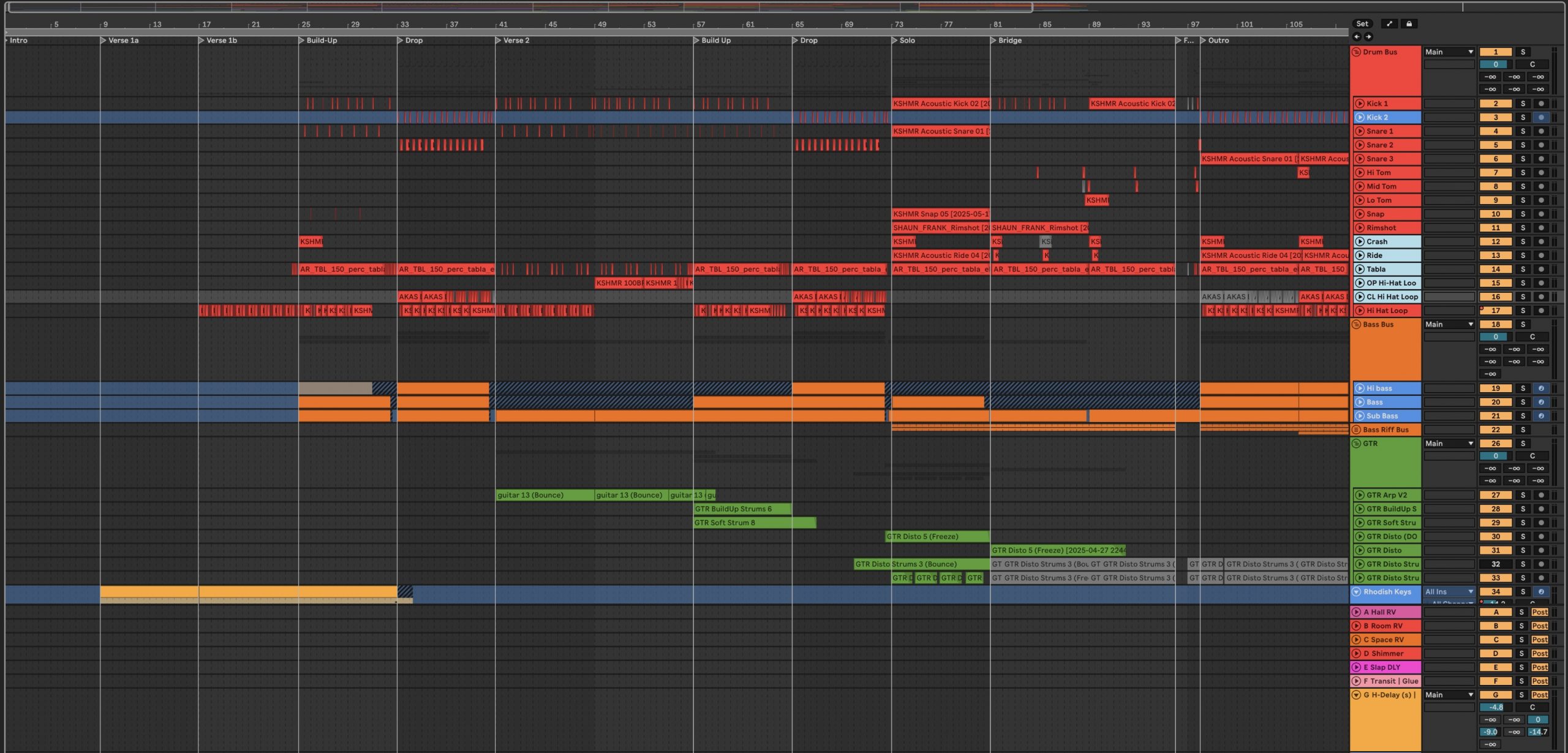
Having a clear view of your song’s layout can make the writing and production process much easier. Most digital audio workstations (DAWs) include tools that help you organise, label, and adjust your structure efficiently.
Use Markers in Your DAW
Markers allow you to label sections such as intro, verse, or chorus directly on the timeline. This helps you see the big picture of your track at a glance and makes it easier to move between sections as you arrange and edit.
Colour Code Your Sections
Assigning different colours to each part of the song can help you visualise your structure quickly. For example, you might use one colour for verses, another for choruses, and a third for breakdowns. This simple step improves your workflow and highlights how your song evolves.
Work With Arrangement Templates
Some producers create or download project templates that include a rough layout of common structures. Starting with a basic roadmap saves time and gives you a framework to build on, especially if you are working in a specific genre.
Reference Other Tracks
Study songs you admire and map out their structure by listening and taking notes. This trains your ear and gives you ideas for your own arrangements. You can also import a reference track into your DAW and match its structure visually as you build your own.
Use Arrangement and Songwriting Apps
There are tools designed specifically to help with songwriting structure, including apps that let you sketch out verses, choruses, and lyrics in order. These can help you plan before jumping into your DAW.
Mastering Song Structure to Build Better Tracks
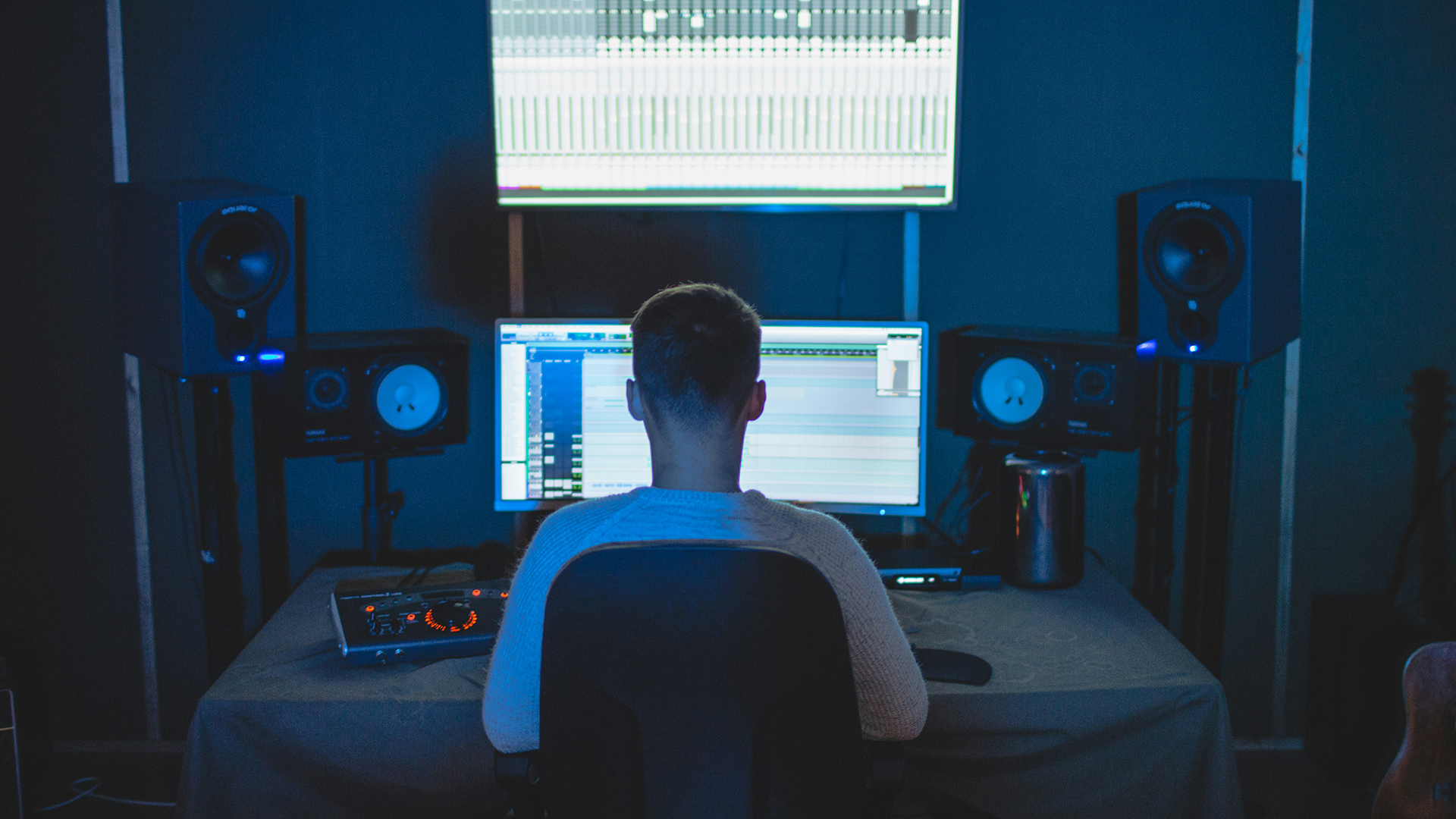
Understanding song structure is one of the most valuable tools you can develop as a music producer or songwriter. It gives your tracks shape, helps you hold the listener’s attention, and supports the emotional flow of your music. Whether you are working in pop, electronic, hip-hop, or any other genre, structure provides a foundation that helps you turn creative ideas into complete songs.
By learning the purpose of each section, exploring different formats, and using the tools available in your DAW, you can start building tracks that sound more intentional and professional. You will also find it easier to finish songs, collaborate with others, and adapt your ideas across styles.
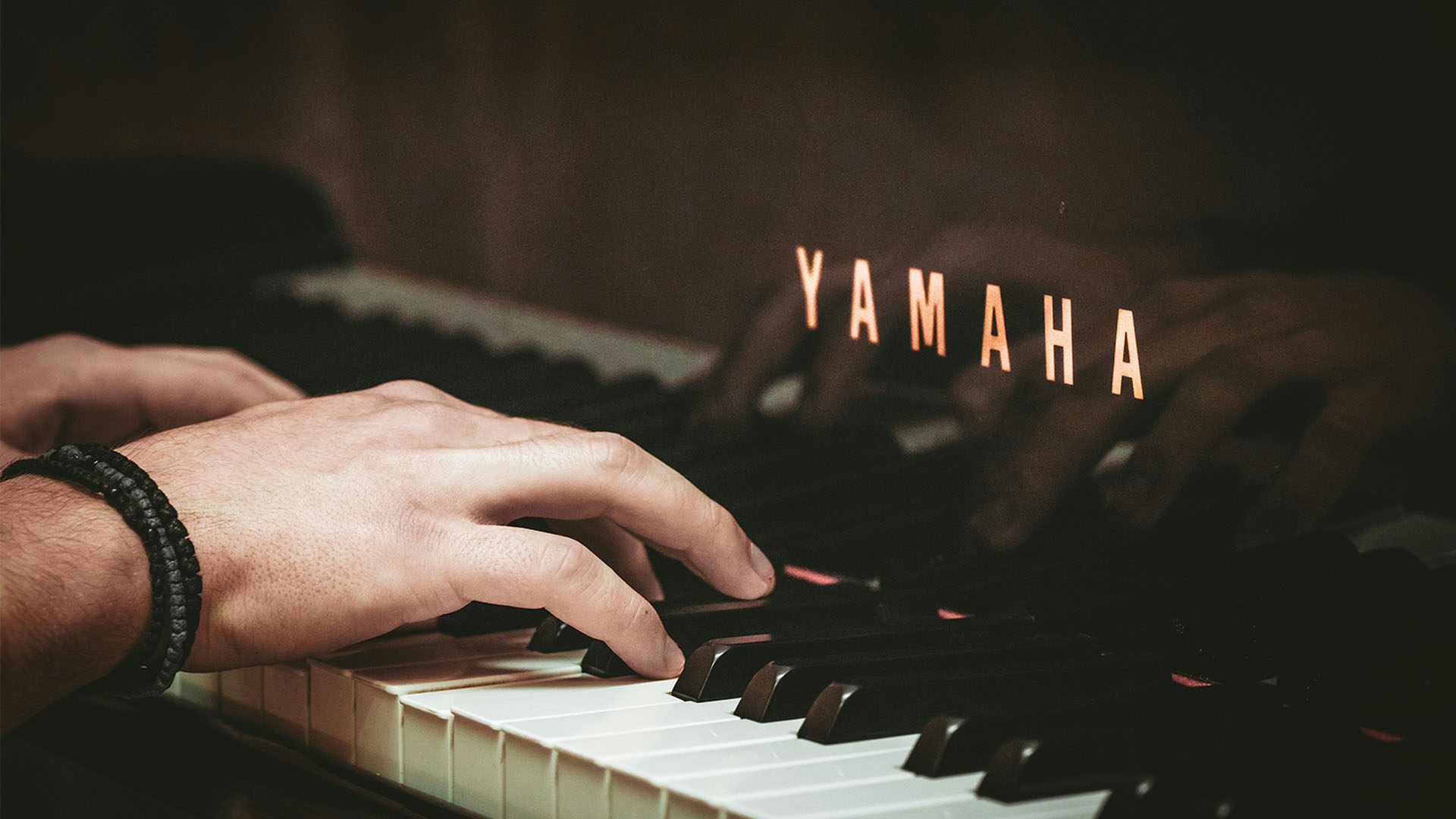
As you continue to chase your dreams in songwriting and music production, consider how a structured path could amplify your creativity and propel your career forward. Our BA (Hons) Music Production & Songwriting degree is your gateway to shaping a distinctive musical identity, refining your craft with precision, and gaining invaluable insights into the ever-evolving music industry. Choosing this course means committing to your potential. It means surrounding yourself with industry expertise, fostering your artistic confidence, and harnessing the transformative power of great songwriting structure. You would also get to experience an all-immersive songwriting boot camp at Osea Island – a place that has sparked inspiration for some of the most celebrated artists and creators.
Inspired?
Thanks to the dedication of our industry expert instructors, pointblank is the only specialist music production institute to be awarded a TEF Gold rating. Whether you’re passionate about DJing, music production, sound engineering, vocal performance, software engineering, radio, or songwriting – pointblank offers degrees or short courses in London, LA, Ibiza, and Online. No matter your location or aspirations, we are here to help make your dreams a reality.
Register to Access Free Courses, Plugins, Projects, Samples & More
Register below and visit our Free Stuff page to get your hands on a range of free courses, exclusive music-making tools, and tutorials provided by the team.

